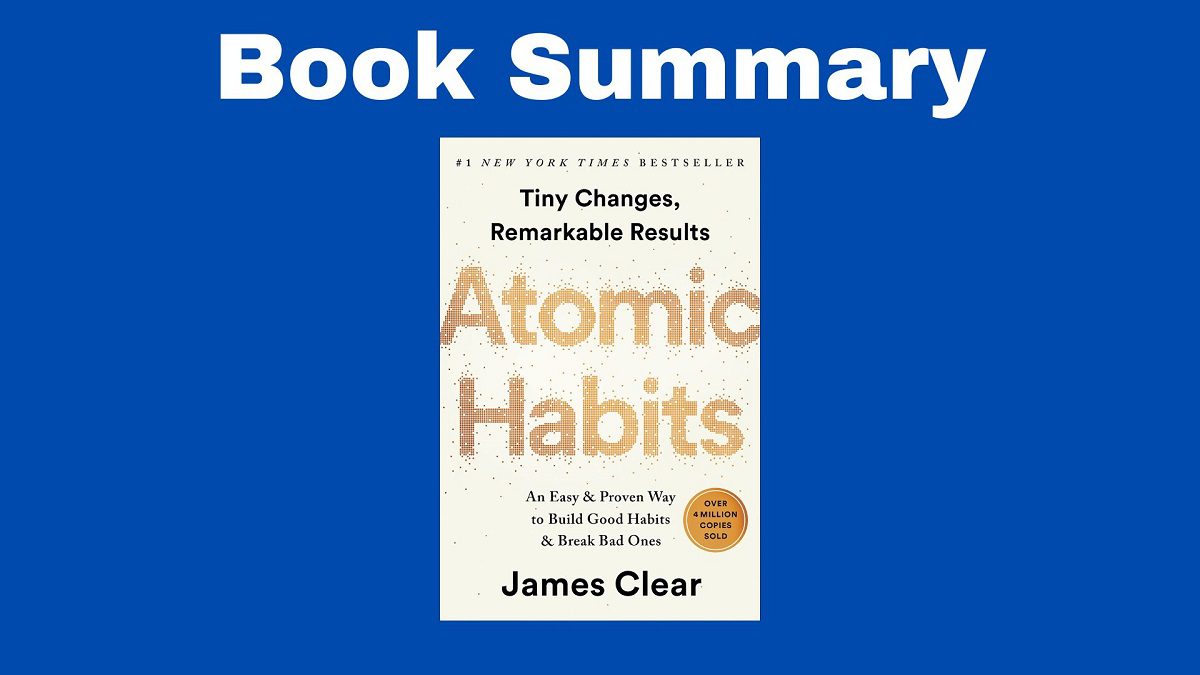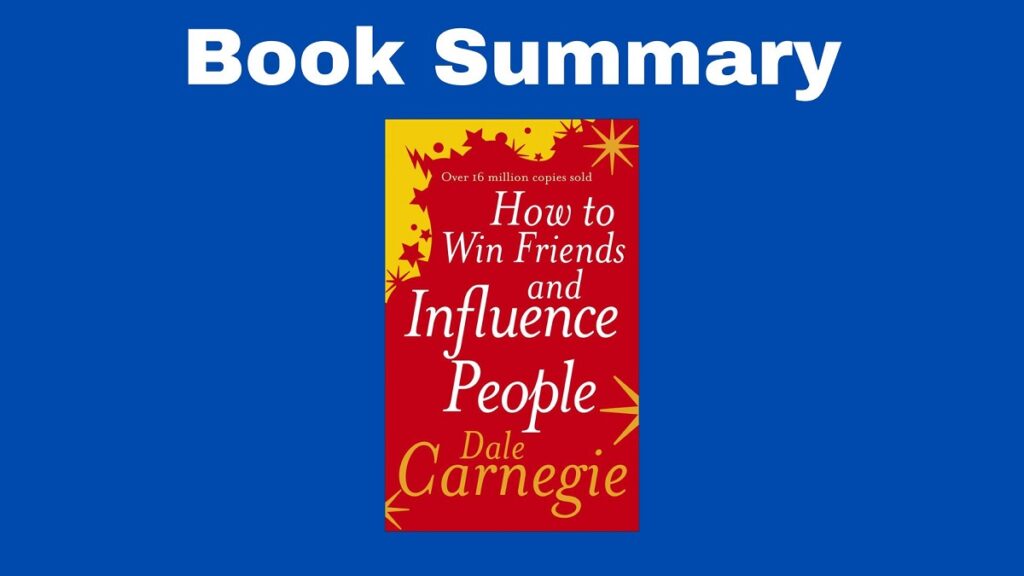The Book in Three Sentences
In this book summary of Atomic Habits, you’ll learn a framework that teaches you to build good habits and break bad ones. The book suggests that the problem when it comes to changing habits isn’t you, but the system you use. The idea behind Atomic Habits is that by improving small behaviors every day, you’ll achieve incredible results over time.
Atomic Habits Summary
Introduction
Small changes can compound and have remarkable results. The book shares a step-by-step program to build better habits.
The Fundamentals: Why Tiny Changes Make a Big Difference
Chapter 1: The Surprising Power of Atomic Habits
There’s a strategy known as the aggregation of marginal gains, a way of thinking that involves a small margin of improvement in every aspect of something. If you divide a given discipline into small parts and improve one percent on each of those, when you put everything together, the results are tremendous.
Small improvements you make daily make a big difference over time. Although making huge improvements seems like the best approach, if you get one percent better every day for a year, you’ll be thirty-seven times better when you’re done. One percent doesn’t sound like much, but the compound effect of such small improvements has huge results over time. Small changes seem inconsequential on a day-to-day basis because we don’t see the results. Similarly, if you were to repeat one percent of mistakes, the result would compound into something toxic.
Daily habits lead to success, not one-of-a-kind events. By paying close attention to your habits, you can see your current trajectory and determine the outcome they’ll have. Breakthroughs are the result of several actions that took place before which build up over time and result in massive change.
In the early stages of the learning process, there’s something called the Valley of Disappointing. You expect progress to be linear and that it’ll come quickly, but the changes you make seem ineffective and the most powerful results take more time. Once you cross that value, you’ll see the results of your good habits. The work you’ve done is being stored and you’ll see success over time. It can take years, but when change finally happens, it might occur all at once, and at that point, we’ll see the value of the work we’ve done. Habits start from tiny decisions. As that decision takes place over and over, the habit becomes stronger.
To achieve what we want, most people believe that we have to set goals. Clear argues that you should focus on the system instead. The difference is that goals are about the outcome while the system is about the processes that let you achieve those goals. The author believes that even if you ignore the goals, as long as you focus on the system, you’ll still get the desired results. Goals are still useful because they give you a sense of direction, but systems are all about making progress. Don’t spend too much time on your goals rather than on your system.
These are the problems you’ll run into if you do:
- Problem #1: Winners and Losers Have the Same Goals: ambition shouldn’t be your only driving force. The thing that lets people win at something is the system.
- Problem #2: Achieving the Goal Is Only a Momentary Change: if you simply chase the outcome and never bother to change the system, you’ll always have some problems. Achieving goals involves momentary changes. Focusing on the system involves daily habits that avoid problems in the first place.
- Problem #3: Goals Restrict Your Happiness: your happiness shouldn’t depend on your goals because that requires postponing happiness until your future self achieves something. Fall in love with the process instead and be happy every day the system is working.
- Problem #4: Goals Are at Odds with Long-Term Progress: By focusing on the goals, once you achieve something, you no longer have the incentive to keep working.
Atomic habits are small habits that offer a tiny gain. They are also small changes that belong to a larger system.
Chapter 2: How Your Habits Change Your Identity (and Vice Versa)
How is it that starting good habits is hard, but maintaining bad ones is easy? That’s the case because we try to change the wrong thing and we do it in the wrong way.
There are three layers to changing your behavior. At the center, you have your identity, then you have the outer process and the outer layer represents the outcomes. Changing your outcomes means changing the results (what you get), changing your processes means changing habits and systems (what you do), and changing your identity means changing your beliefs (what you believe in).
Don’t change your habits by focusing on the outcomes, build identity-based habits instead. Shift your identity to refer to your current life and where you want to get. You may never sustain habits if you don’t change your beliefs first. When a habit becomes part of your identity, you feel intrinsic motivation. In other words, you become your habit. This can be a curse when you repeat a story to yourself because you’re more likely to be that. This is the case when you say “I’m terrible with technology” whenever you have a problem with your phone or computer.
Your identity forms your habits, so to change your identity, you must first change your habits. The more you repeat an action, the more it becomes part of your self-image. Every decision you make, however small, points you in a specific direction and as you repeat those decisions, you find evidence of a new identity. By doing certain habits, you can become whoever you want and it only takes small improvements.
To give yourself a new identity:
- Decide who you want to be
- Prove it to yourself by performing small actions
Habits aren’t about having something, they’re about becoming someone.
Chapter 3: How to Build Better Habits in 4 Simple Steps
A habit is a repeated behavior that’s performed automatically. When you encounter a problem in real life and you come across a rewarding solution, your brain recognizes that, remembers it, and encourages you to repeat it. In other words, your brain automates the process of solving a given problem. Once a habit’s been formed, it frees up your mental energy so that you can focus your attention on a more demanding task.
There are four steps to habit formation:
- Cue: the hints that predict a reward
- Craving: the desire that makes us act
- Response: the thought or action that takes place, the actual habit
- Reward: the goal of every habit, what satisfies us and teaches us
If any of the four stages is missing, it won’t become a habit. The four steps form a feedback loop called the habit loop which is in constant motion. This explains why habits are automatic. The author proposes a framework he calls the Four Laws of Behavior Change to create good habits and break bad ones.
To create good habits:
- The 1st law (cue): make it obvious
- The 2nd law (craving): make it attractive
- The 3rd law (response): make it easy
- The 4th law (reward): make it satisfying
To break bad habits:
- Inversion of the 1st law (cue): make it invisible
- Inversion of the 2nd law (craving): make it unattractive
- Inversion of the 3rd law (response): make it difficult
- Inversion of the 4th law (reward): make it unsatisfying
The 1st law: Make It Obvious
Chapter 4: The Man Who Didn’t Look Right
When you experience something enough times, you learn its intricacies. This means you can identify the cues that lead to certain outcomes. When a behavior becomes automatic, you don’t think about it consciously. To change habits, you have to be aware of them.
Chapter 5: The Best Way to Start a New Habit
The Implementation Intention describes how you intend to implement a habit. Two of the most common cues are time and place. To be more effective when it comes to habits, state when and where you’re going to do them. What most people lack isn’t motivation, what they lack is clarity.
Some human behaviors follow a specific cycle. You often decide what to do next depending on what you just did. To build new habits, you can use this cycle to your advantage and connect habits. This is called habit stacking and you can use the momentum one habit generates to string several good habits together.
Chapter 6: Motivation Is Overrated: Environment Often Matters More
People often choose things because of where they are rather than what they are. Your habits change according to your environment. Most of the actions we take every day are not driven by choice but because they are the most obvious option. Small changes in what you see can affect what you do. Surround yourself with productive cues instead of unproductive ones. In other words, set up your environment for success. By making the cues part of your environment, you’re trying to welcome good habits into your life. Habits are usually associated not with a specific trigger, but with certain contexts (such as drinking alcohol in social situations).
Each location has mental associations, so we can connect certain habits and routines with certain places. Also, it’s easier for us to start new habits in a new place where we have no associations. Don’t mix contexts because that means mixing habits. The place where you sleep shouldn’t be the place where you consume entertainment, for instance. Interestingly, you can take a similar approach with your devices, such as using your phone for social media and texting, your computer for writing, and your tablet for reading. If you keep this up, each space or device becomes part of a habit and thought process: your desk is the place where you focus, your couch is the place where you relax, and your bedroom is the place where you sleep, for instance.
Chapter 7: The Secret to Self Control
Disciplined people don’t have more self-control, they simply avoid certain situations. Cue-induced wanting is when a cue backfires and leads you to do the habit you’re trying to quit. You can break habits, but you can’t forget them. The most practical way to get rid of a habit is by reducing exposure to the cue that leads to it. By removing a cue, the entire habit can fade away. For example, if you watch too much TV, rather than relying on self-control, you can put it in a closet.
The 2nd Law: Make It Attractive
Chapter 8: How to Make a Habit Irresistible
Supernormal stimuli represent an exaggerated version of reality that makes someone produce a strong response. Although food was scarce thousands of years ago and humans are biologically trained to eat as much food as possible, especially food with salt, fat, and sugar, that’s no longer the case. Nevertheless, we still crave it and our brain rewards us for consuming a lot of it. The modern food industry abuses the 2nd Law of Behavior Change: make it attractive. How food looks, tastes, and is presented is exaggerated to the point that our instincts become extremely excited.
Luckily, we can use this 2nd law to our advantage too. All habits lead to a dopamine spike. Dopamine is released when you experience pleasure and when you anticipate it. The anticipation of something often feels better than the reward. Therefore, make your habits attractive to feel motivated to do them. To make certain habits attractive, you can use a technique called bundling where you combine a habit you already like (such as listening to a podcast), with a habit you don’t like as much (such as exercising).
Chapter 9: The Role of Family and Friends in Shaping Your Habits
Above all else, humans desire to belong and this affects our behavior. Our earliest habits aren’t by choice, but something we imitate. Behaviors become more attractive when they’re something that lets us fit in.
We imitate the habits of:
- The close: this means people close to us, such as friends, family, or our partner
- The many: this means going with the crowd as a way to be accepted
- The powerful: this is about copying the behavior of successful people
Chapter 10: How to Find and Fix the Causes of Your Bad Habits
Habits are attractive when we relate them to positive feelings, so by associating hard habits with a positive experience, we can make them attractive. By reframing habits to see the positivity behind them, we can make them more attractive. You can create routines around something that makes you happy. Do it enough times and you’ll condition yourself to be happy.
The 3rd Law: Make It Easy
Chapter 11: Walk Slowly, But Never Backward
Don’t sit around looking for perfection, do something because that’s what will deliver an outcome. Planning or learning can be useful, but they’ll never create an outcome. When it comes to habits, we need repetition, not perfection.
Habit formation is the process in which a behavior is repeated so many times it becomes automatic. Picking up a habit isn’t about time, but repeating it so much that it becomes effortless.
Chapter 12: The Law of Least Effort
Following the law of least effort is human nature and one way to subvert it is by making it easy. When something is easy, we feel motivated. What you want is the outcome, but when a habit is difficult it becomes an obstacle. This creates friction between you and the result. By removing this friction, you’re more likely to follow through. The idea is to make habits so easy that you can do them even when you don’t want to. In other words, to do more with less effort.
Reduce the friction associated with specific habits. The author describes a strategy he calls addition by subtraction which involves looking for every point of friction in a given process and eliminating them. In other words, you get rid of the points of friction that waste your energy, to achieve more with less effort. The best products and services around you have reduced friction and that’s why they’re so popular: a Kindle has made it easier to download and read books, Netflix allows you to stream movies right to your television, and so on. By automating, eliminating, and simplifying, you’re making it easier. You can prime your environment to make good behaviors easy (prepare a healthy breakfast the night before) and make bad behaviors difficult (disconnect a video game console after using it and store it in a closet).
Chapter 13: How to Stop Procrastinating by Using the Two-Minute Rule
Once you take the first step of a given ritual, the other steps are easier. Over the course of a given day, you have decisive moments where you either have a good or bad decision to make. This is usually the difference between a productive and healthy day and the complete opposite. Ultimately, these choices stack up and lead to different outcomes.
Always start small, even when you want to be big. One way to achieve this is by using the two-minute rule that says that to start a habit, it should be two minutes or less. The idea is to establish a habit and then you can improve it over time. You should first show up and you can always master the details later. In other words, standardize before you optimize.
Chapter 14: How to Make Good Habits Inevitable and Bad Habits Impossible
If you struggle to achieve your goals, make your habits difficult by using a commitment device. A commitment device is a present choice that affects your future actions. An example would be to leave your wallet at home in order not to buy junk food. You change a task in such a way that getting out of the bad habit is more work than starting the bad one. To break a bad habit is to make it impractical. Favor one-time choices that require work but increase value over time, such as buying smaller plates to reduce portions, unsubscribing from emails, turning off notifications, or cutting the cable. You can also use technology to automate tasks, such as installing a website blocker that prevents you from accessing social media websites.
The 4th Law: Make It Satisfying
Chapter 15: The Cardinal Rule of Behavior Change
We are likely to do something again when it’s satisfying. The problem is that while we look for immediate pleasure, we live in a delayed-return environment. This would explain why you prefer to stay at home and watch television instead of exercising because by doing the latter, you get the reward now. When it comes to bad habits, the immediate result feels good, but the outcome is bad. When it comes to good habits, the immediate result is unenjoyable, but the outcome is good. To put it more simply, bad habits cost you your future.
Unfortunately, the brain prioritizes the present, and even if you think of a potential future with a better life that makes more sense, instant gratification usually wins. So you have to train yourself to delay gratification by using reinforcements. These are immediate, short-term rewards to perform a behavior more often. The idea is to feel satisfaction after not doing a bad habit. For example, for a certain amount of money you save not buying frivolous stuff, you put some of that money in a separate account and you can use that money for a family trip.
Chapter 16: How to Stick with Good Habits Every Day
Making progress is satisfying, especially when there’s a visual reference. Visual measurements include journals, logs, punch cards, progress bars, percentages, page numbers, and so on. The best way to measure progress is with a habit tracker because they have several benefits.
- Benefit #1: habit tracking is obvious
- Benefit #2: habit tracking is attractive
- Benefit #3: habit tracking is satisfying
Some people see habit tracking as a hassle because you have to do two habits: the habit you’re actually doing and measuring it. As an alternative, you can use resources that are tracking habits for you already, such as credit card statements or step counters. Also, limit manual tracking to your most important habits. Try to do it as soon as you’re done doing the habit itself. This is an example of habit stacking which we discussed earlier.
Emergencies can prevent you from doing one or more of your daily habits. As a general rule: never miss a habit twice in a row. A mistake doesn’t ruin your life, but a series of mistakes can. Missing a habit once is an accident, but missing more can become a habit in itself. This is the difference between winners and losers.
The bad days, the ones where you don’t feel like doing anything, are the most important because they keep the compound gains you’ve accumulated from the good days. With the simple act of showing up, you’re saying that you’re the kind of person who shows up and does the work. It’s easy to do things when problems come up. Your work during the bad days won’t make a difference, but the act of showing up reaffirms your identity.
Chapter 17: How an Accountability Partner Can Change Everything
Instead of making it satisfying, you can inverse the 4th law of Behavior Change and make it unsatisfying. You learn faster from painful mistakes. Adding cost to your behavior is a good way to prevent bad habits. To add a cost to a habit, create a habit contract. This is an agreement where you commit to a habit and a punishment in case you don’t follow through.
Chapter 18: The Truth About Talent (When Genes Matter and When They Don’t)
To maximize your chances of success, choose the right field. Habits are easier when they align with your natural abilities. To identify the areas where you’ll thrive you have to understand your personality.
The “Big Five” is a scientific analysis that divides personality traits into five spectrums of behavior:
- Openness to experience
- Conscientiousness
- Extroversion
- Agreeableness
- Neuroticism
Our habits are determined by our personalities. Our genes also steer us in a specific direction. Don’t choose popular habits, choose the ones that suit you specifically. Pick the right habit so that everything’s easy, you’re successful, and you’re more satisfied. Favor work that feels like play, activities that make you lose track of time, something that comes naturally to you. If you can’t be better, you can always be different by combining several skills. Our genes tell us what to work hard on. You still have to do the work to prove it though and at least, you’ll have fun and life won’t be a struggle.
Chapter 19: The Goldilocks Rule: How to Stay Motivated in Life and Work
To be focused on the task at hand, you have to feel constantly challenged. The Goldilocks rule says that motivation peaks when the task at hand is on the edge of our current abilities. The greatest threat to success is boredom, not failure. To succeed at something, you have to put up with the same tasks over and over. Showing up and doing the work anyway is the difference between a professional and an amateur. Fall in love with boredom.
Chapter 20: The Downside of Creating Bad Habits
Once you master a habit, it’s easy to commit mistakes. Set up a program for reflection and review to make sure you’re not committing mistakes and that you’re still achieving mastery over time.
FAQ
What is Atomic Habits about?
Atomic Habits teaches you a framework to develop good habits and break bad ones. The idea is that small changes compound and lead to remarkable results. To get there, author James Clear suggests that we set systems instead of goals.
What are the four laws of behavior change in Atomic Habits?
The Four Laws of Behavior Change is a framework to create good habits and break bad ones.
To create good habits:
- The 1st law (cue): make it obvious
- The 2nd law (craving): make it attractive
- The 3rd law (response): make it easy
- The 4th law (reward): make it satisfying
To break bad habits:
- Inversion of the 1st law (cue): make it invisible
- Inversion of the 2nd law (craving): make it unattractive
- Inversion of the 3rd law (response): make it difficult
- Inversion of the 4th law (reward): make it unsatisfying
Is Atomic Habits good for breaking bad habits?
Yes. The book suggests a framework to make good habits inevitable and bad habits impossible. To break bad habits, we must make them impractical. Bad habits often feel good in the moment but lead to bad outcomes. So, in a way, bad habits rob us of our future.




